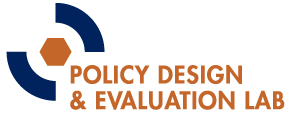Assessing the Migratory Patterns and Welfare Outcomes of Refugee Populations in East Africa
Student Researchers: John Porten and Michael Seese
Location: Kenya
A primary impediment to the study of refugees, their welfare, and their effects on host communities, is the lack
of accurate data on refugee populations, demographics, and migratory patterns. This project represents a preliminary step towards assembling such data. Working with a refugee settlement in eastern Kenya, researchers will assess the viability of using mobile technology to track transient populations over time and across geographic space.
Enumeration of refugee populations poses several methodological challenges: First, refugee populations tend to be highly transitory. Second, the sensitivity of the questions asked, coupled with the potential negative consequences of cooperation with Western researchers, dissuades individuals from participating in enumeration projects, or from providing honest answers when they do.
Cellular technology promises to ameliorate some of these concerns. Cell phones are portable and allow for greater privacy in providing responses. This technology does, however, present other difficulties. Respondents may balk at being tracked, or fear that phone activity is easier to record and trace than personal conversations. Despite these difficulties, researchers hope to develop a scalable, mobile technology-based method.

